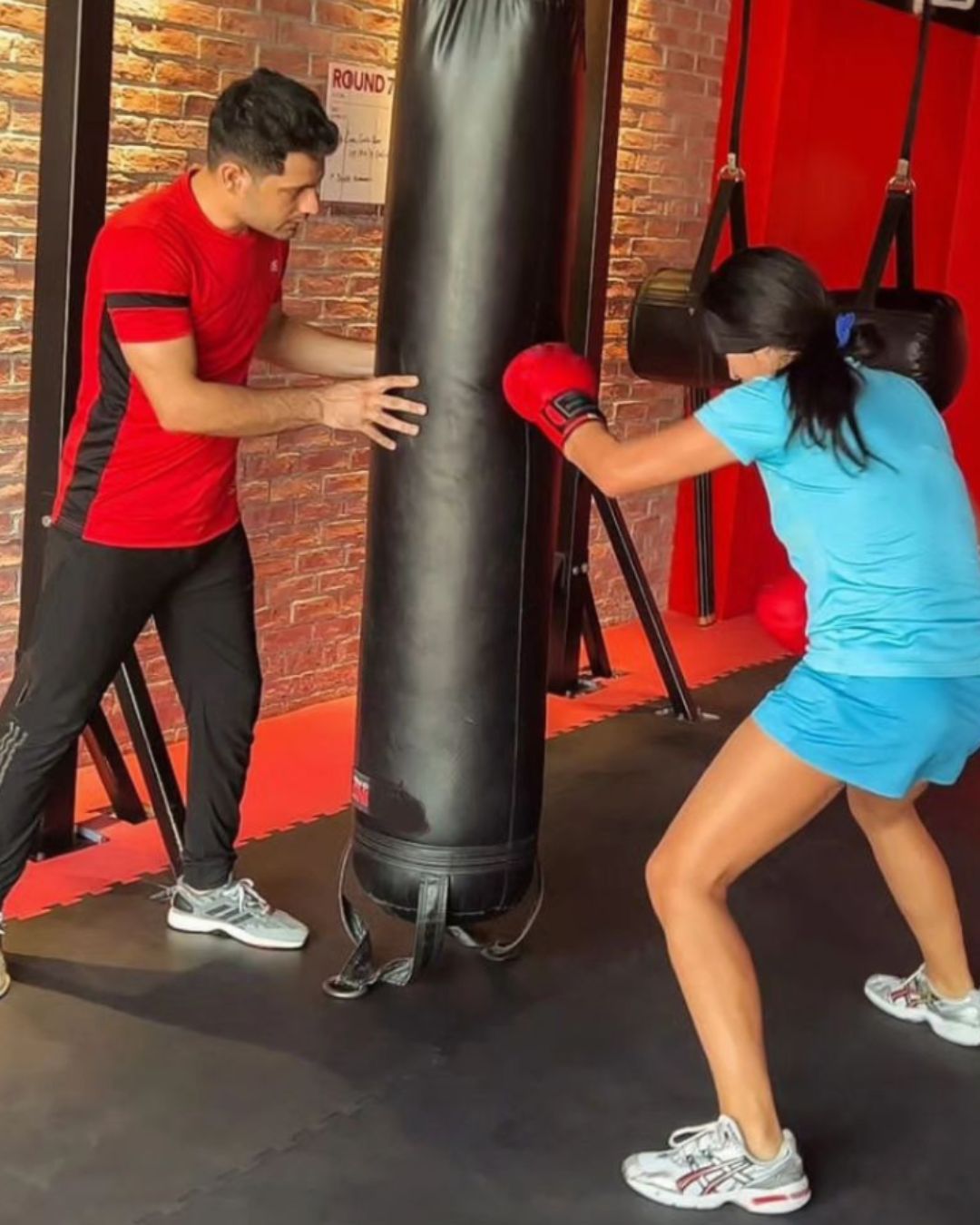Kickboxing is one of the fastest-growing martial arts in the world. It combines elements of boxing and kicking into a dynamic sport that boosts strength, confidence, and overall fitness. For beginners, it is both exciting and challenging. However, like any skill, learning kickboxing comes with its share of hurdles. Many newcomers repeat the same kickboxing mistakes or errors without even realizing it, which can slow down their progress, affect their confidence, and sometimes lead to injuries.
This guide is designed to help you recognize and correct the most common kickboxing mistakes. Whether you’re training for fitness, self-defense, or competition, avoiding these pitfalls will give you a stronger foundation, better results, and a safer training journey.
In the following sections, we’ll break down the top 10 mistakes beginners make, explain why they happen, and give you step-by-step solutions to fix them. We’ll also cover extra tips, expert advice, and frequently asked questions so that by the end of this article, you’ll know exactly how to train smarter and improve faster.
Why Do Beginners Make Kickboxing Mistakes?
Before jumping into the top mistakes, it’s important to understand why they happen in the first place. Most beginners make errors because:
- They rush into training without mastering basics.
- They try to copy professionals without guidance.
- They underestimate the importance of warm-ups, conditioning, and recovery.
- They focus on flashy moves instead of technique.
- They don’t get enough feedback from coaches or peers.
Recognizing these reasons helps you stay more mindful during practice. Remember, mistakes aren’t failures—they’re stepping stones. What matters most is how quickly you identify and correct them.

Also Read: Basic Kickboxing Techniques for Beginners – Your Complete Guide to Get Started
Top 10 Kickboxing Mistakes and How to Fix Them
Mistake 1: Skipping Warm-Ups and Cool-Downs
Why It’s a Problem
Many beginners walk into the gym and go straight to heavy bag work or sparring. Skipping warm-ups increases the risk of muscle strains, stiff joints, and injuries. Similarly, avoiding cool-downs leaves your muscles tight, which affects recovery.
How to Fix It
Spend at least 5–10 minutes warming up before every session. Use dynamic stretches like arm circles, leg swings, and torso twists. Add light cardio such as skipping rope or jogging in place to get your blood flowing. After training, cool down with static stretches focusing on hamstrings, calves, shoulders, and hips. Breathing exercises can also speed up recovery.
Mistake 2: Poor Footwork and Stance
Why It’s a Problem
Your stance is the foundation of everything in kickboxing. Beginners often stand too wide, too narrow, or too flat-footed. Poor footwork makes you slower, less balanced, and more vulnerable to attacks.
How to Fix It
Practice maintaining a shoulder-width stance with your knees slightly bent. Keep your weight balanced between both feet. Drill basic footwork every day: forward and backward steps, lateral movement, and pivoting. Skipping rope, ladder drills, and shadowboxing are excellent ways to improve agility.
Mistake 3: Focusing on Power Instead of Technique
Why It’s a Problem
Throwing punches and kicks with maximum force may feel satisfying, but without proper technique, you waste energy and risk injury. Beginners often overuse their arms instead of engaging hips and core.
How to Fix It
Slow down and focus on form first. Practice shadowboxing in front of a mirror to check alignment. Learn how to generate power through rotation and proper body mechanics. Once your form is correct, gradually increase intensity. Remember, good technique will naturally produce power over time.
Also Read: Kickboxer’s Diet: What to Eat Before and After Training for Best Performance
Mistake 4: Holding Your Breath During Training
Why It’s a Problem
New kickboxers often forget to breathe while throwing combinations. Holding your breath builds fatigue quickly, lowers performance, and can even make you dizzy.
How to Fix It
Train yourself to exhale with every strike—short, sharp breaths through your nose or mouth. Inhale during movement or recovery phases. This controlled breathing keeps your body energized and your strikes more powerful.
Mistake 5: Ignoring Defense
Why It’s a Problem
Many beginners focus on offense—throwing punches and kicks—while forgetting to protect themselves. This leaves them open to counterattacks and bad habits.
How to Fix It
Always keep your hands up to protect your face. Train defensive techniques like slipping, parrying, and blocking along with offense. Shadowbox using only defense for one round to sharpen your reactions. Sparring with light contact also builds defensive awareness.

Mistake 6: Neglecting Conditioning
Why It’s a Problem
Kickboxing is physically demanding. Without proper conditioning, beginners gas out quickly, lose technique under fatigue, and struggle to keep up in sparring.
How to Fix It
Include conditioning exercises in your routine: push-ups, burpees, planks, running, and high-intensity interval training (HIIT). Strong legs and core are crucial, so don’t skip squats and core workouts. Over time, better conditioning will let you maintain sharp technique throughout training.
Also Read: Kickboxing for Beginners – The Ultimate Guide to This Powerful Sport
Mistake 7: Incorrect Punching Form and Ignoring Gear
Why It’s a Problem
Throwing punches with bent wrists or improper alignment leads to injuries. Using low-quality gloves or skipping hand wraps adds to the risk.
How to Fix It
Always wrap your hands before training to protect wrists and knuckles. Invest in good-quality gloves. When punching, keep your wrist straight and knuckles aligned. Practice on focus mitts or shadowboxing to correct alignment before hitting the heavy bag.
Mistake 8: Training Without Feedback
Why It’s a Problem
Learning kickboxing on your own, without a coach or partner, makes it easy to repeat mistakes without realizing it. Bad habits stick fast and become harder to fix later.
How to Fix It
Ask your instructor for constant feedback. Record your shadowboxing and sparring sessions to analyze form. Train with a partner to improve timing and awareness. Don’t be shy—corrections are what make you better.
Mistake 9: Poor Nutrition and Hydration
Why It’s a Problem
Your body needs fuel to perform. Beginners often underestimate the importance of proper nutrition and hydration, which leads to low energy, poor focus, and slower recovery.
How to Fix It
Drink enough water throughout the day, not just during training. Eat balanced meals that include carbohydrates for energy, protein for muscle repair, and healthy fats for endurance. Avoid heavy junk food before class—it will slow you down.
Mistake 10: Fear or Ego in Sparring
Why It’s a Problem
Some beginners hold back in sparring because of fear, while others go too hard due to ego. Both approaches hinder learning and may cause injuries.
How to Fix It
Treat sparring as practice, not a fight. Communicate with your partner about intensity. Use sparring to test technique, timing, and defense, not to “win.” Respect your partner and focus on growth.
Expert Tips to Avoid Kickboxing Mistakes
- Stay consistent: Progress comes from regular practice, not occasional effort.
- Master basics first: A strong foundation beats flashy techniques.
- Record your progress: Videos help you see mistakes coaches may not catch.
- Cross-train: Add strength, mobility, and cardio training.
- Be patient: Improvement takes time—don’t rush the process.
Also Read: 10 Amazing Benefits of Kickboxing – Why You Should Start Today
Frequently Asked Questions (FAQs)
1. Can I learn kickboxing at home without a coach?
Yes, but it’s not ideal. Without feedback, you may develop bad habits. If you must train at home, use online tutorials and record yourself to check form. Joining a class, even once a week, makes a huge difference.
2. How long does it take to correct beginner mistakes?
It depends on how consistent you are. With proper coaching and regular practice, most beginners see major improvements within 2–3 months.
3. What’s the most dangerous mistake in kickboxing?
Poor technique combined with lack of defense is the most dangerous. It can cause injuries to you and your partner. Always prioritize form and protection.
4. Do I need expensive equipment to avoid mistakes?
Not necessarily. Good-quality gloves, wraps, and a mouthguard are essential, but you don’t need the most expensive gear. Focus on safety and comfort.
5. How many times a week should I train as a beginner?
2–3 times per week is enough to build skill and fitness without overwhelming your body. As you improve, you can increase frequency.
Conclusion
Kickboxing is a rewarding martial art, but progress depends on how well you avoid beginner errors. The most common kickboxing mistakes include skipping warm-ups, poor footwork, focusing on power over technique, forgetting to breathe, neglecting defense, skipping conditioning, improper punching, lack of feedback, poor nutrition, and mistakes during sparring.
By recognizing these pitfalls early and applying the solutions in this guide, you’ll improve your skills, prevent injuries, and gain confidence in your training. Remember, everyone makes mistakes—it’s how you learn from them that defines your growth. Stay consistent, train smart, and you’ll see results sooner than you think.





